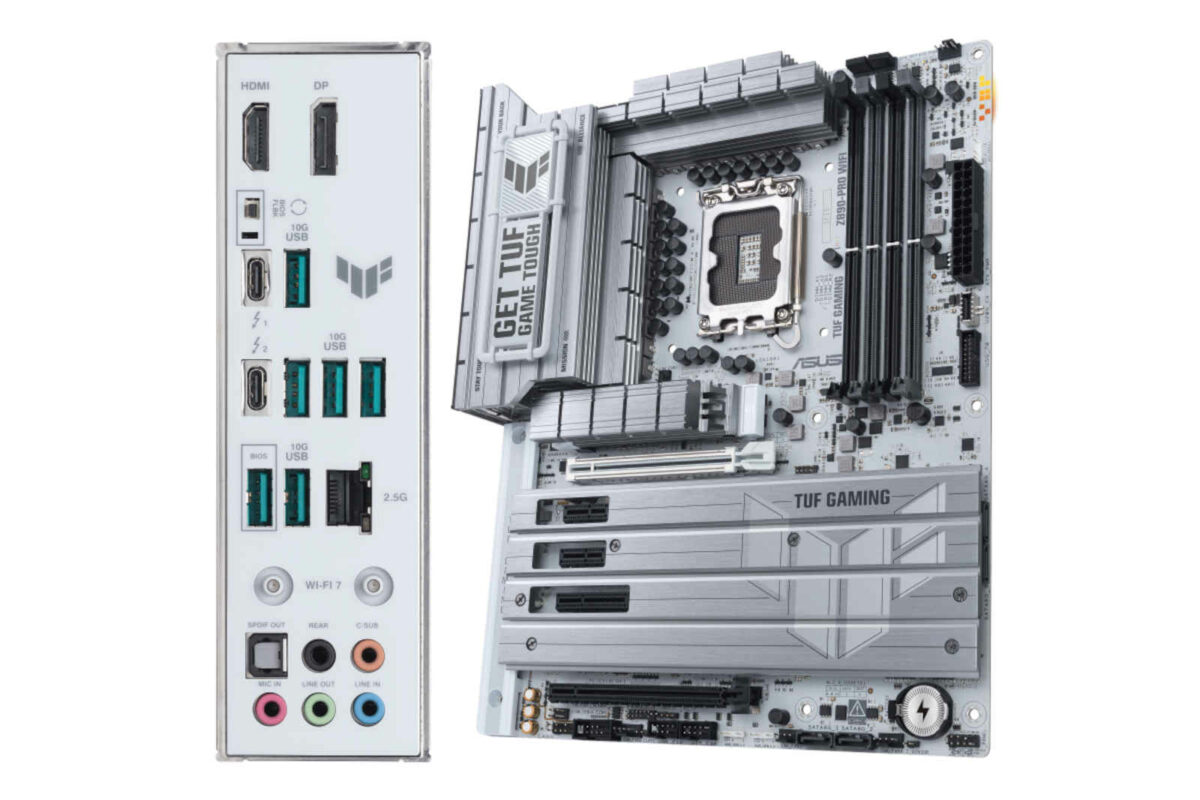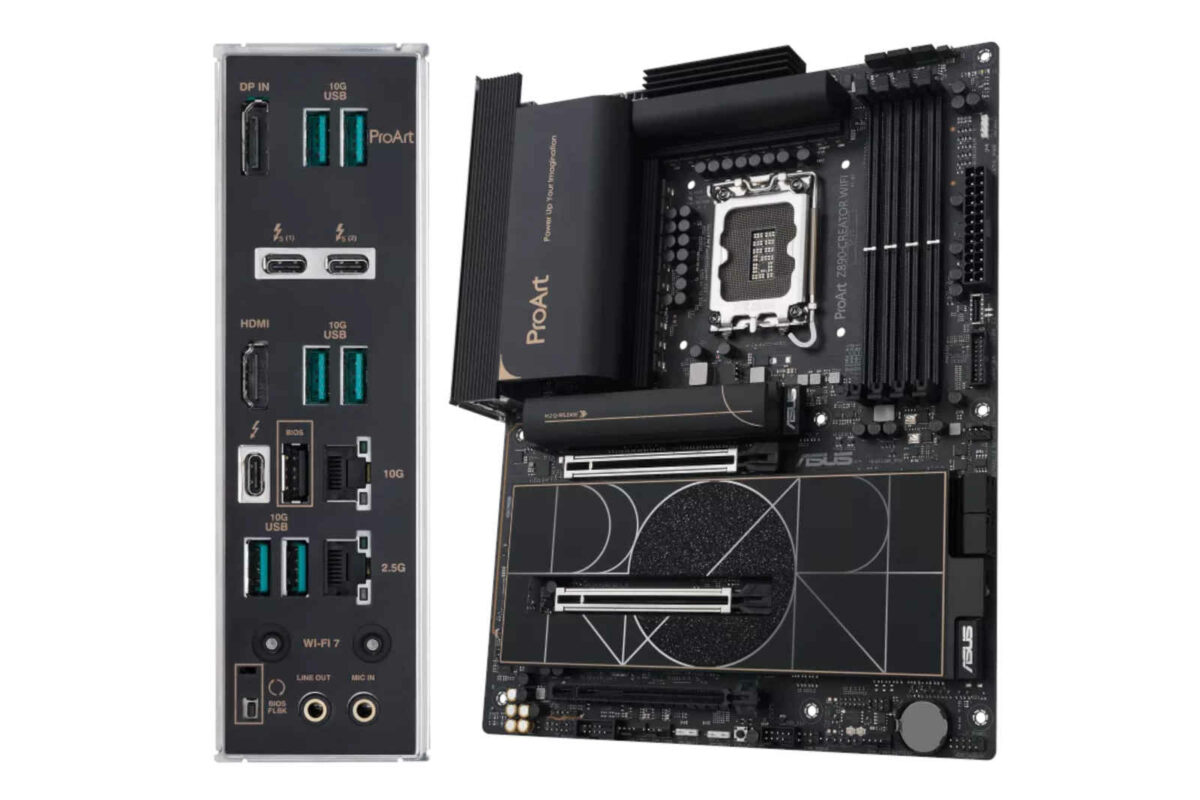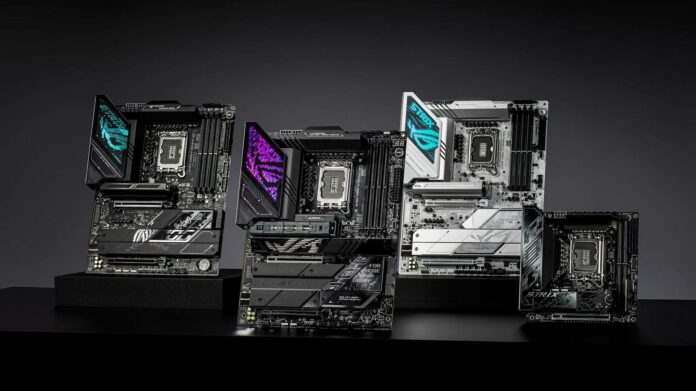Asus has launched a full set of Z890 motherboards ready for Intel’s Core Ultra 200 Series CPUs. No fewer than 17 boards are available, mainly spread among the ROG and Prime series.
The company aims to cover all angles with its Z890 lineup. From overclocking beasts such as the Maximus series to the professional-oriented ProArt, there is something for everyone. With that in mind, two in particular caught my eye. But before I get into them, here is the full list of available boards so far.
- ROG Strix Z890-E Gaming WIFI
- ROG Strix Z890-A Gaming WIFI
- ROG Strix Z890-I Gaming WIFI
- ROG Strix Z890-F Gaming WIFI
- ROG Maximus Z890 Hero
- ROG Maximus Z890 Apex
- ROG Maximus Z890 Extreme
- Prime Z890-P WIFI
- Prime Z890M-Plus WIFI
- Prime Z890-P
- Prime Z890M- Plus WIFI-CSM
- Prime Z890-P WIFI-CSM
- Prime Z890-P-CSM
- TUF Gaming Z890- Plus WIFI
- TUF Gaming Z890-Pro WIFI
- ProArt Z890-Creator WIFI
- Z890 AYW Gaming WIFI W
TUF Gaming Z890-Pro WIFI
Planning for a gaming PC? Then, look no further than the TUF lineup, now available in white/grey to suit RGB builds. The TUF Gaming Z890-Pro WIFI has all the features you would like to have as a gamer. For starters, you get 16+1+2+1 80A power stages ensuring your Core Ultra CPU is well fed, support for DDR5-8600 RAM, and PCIe Gen 5 ready for upcoming GPUs.
There are four DIMM slots in case you need an urgent RAM upgrade, though getting 2x32GB out of the gate should suffice for the rest of this board’s life. As for speed, 8,600MT/s is plenty fast, especially since not all games can take advantage of uber-fast RAM. Asus also has packed its full suite of Q features, most notably those simplifying GPU and SSD removal – fantastic when times come to clean the PC.

Storage-wise, the mandatory Gen 5 M.2 slot is present, waiting to be populated when compatible SSDs become cheap enough. In the meantime, a Gen 4 is all you need. This mode is further complemented by another three M.2 running at Gen 4 speed, for a total of four, which is enough storage for any game library. If for some reason you do need more, there are always the Gen 4 PCIe expansion slots plus the SATA ports.
Lastly, on the I/O side, you will find two Thunderbolt 4 ports, six USB Type-A 10Gbps, 2.5GbE LAN, and Wi-Fi 7. Note, however, that unlike the high-end models, the TUF only carries 160MHz-band Wi-Fi 7, which is slower. Not a deal breaker since gamers tend to use wired connections to avoid erratic ping.
ProArt Z890-Creator WIFI
Next, we have, in my opinion, Asus’ best-looking boards. The ProArt, as its name implies, can become an art piece when paired with a ProArt GPU and case. No RGB distractions here; just a matt-black design with subtle bronze accents.
Below its sober look, though, you will find a 16+1+2+2 phase power-delivery system, able to max out any compatible CPU. Once more, we have support for up to DDR5-8600 memory, with a total capacity of 192GB. Naturally, populating all slots may reduce the maximum attainable speed, but since this board is targeting professionals, capacity is the name of the game.

Moving down to expansion, you will be greeted by three full-size PCIe slots, two of which are Gen 5. Note, however, that populating both at the same time reduces the effective lane count to x8/x8, though that’s still plenty fast. Moreover, to ensure ample storage for those RAW videos and high-resolution images, ProArt can house up to five M.2 SSDs – one of which is Gen 5 – plus four SATA drives. Conveniently, in order to transfer said files in a jiffy, you have a 10GbE Ethernet port complemented by another 2.5GbE plus true Wi-Fi 7.
But wait, there is more. Those who own external storage devices can blast through file copies thanks to two Thunderbolt 5 ports and one Thunderbolt 4. Even peripherals will connect via one of the six USB 10Gbps Type-A ports. A truly wonderful board.
Keep in mind that the rest of the stack is also robust. None of these boards seem cheap or lacking important features. Pricing and availability are to be confirmed. Expect an etailer onslaught come October 24.
